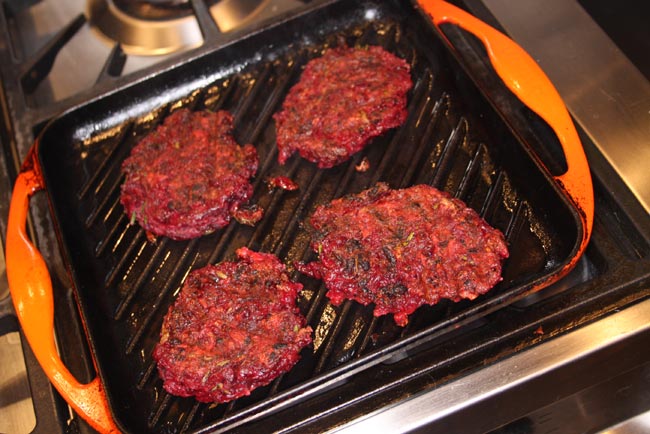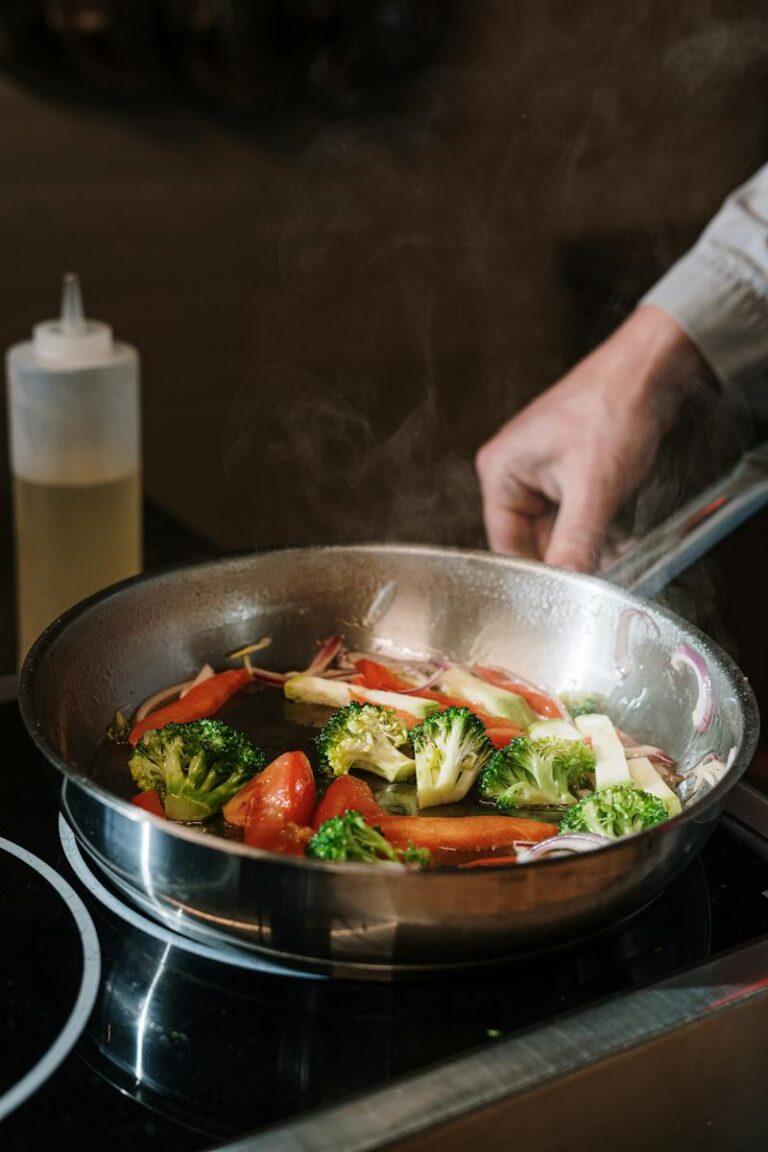Are you torn between using a griddle or a pan to make your perfect pancakes? Look no further! In this article, we’ll settle the ultimate pancake showdown by comparing the heat distribution, flipping techniques, versatility, cooking time, and more.
Discover which cookware will help you achieve light and fluffy pancakes or make spreading batter a breeze. Consider your budget and kitchen size to find the best griddle or pan for your pancake needs.
Let’s dive in and find your pancake cooking companion!
Key Takeaways
- Flipping multiple pancakes at once is easier on a griddle
- Griddle provides better heat control and faster cooking speed
- Use high-quality griddle or pan for even heat distribution
- Both griddle and pan offer unique advantages for pancakes
Griddle Vs. Pan: the Ultimate Pancake Showdown
When it comes to making pancakes, you’ll find that a griddle and a pan have their own advantages and unique qualities.
Let’s start with flipping techniques. If you’re using a griddle, you’ve more space to flip multiple pancakes at once. It’s easier to achieve that perfect golden brown color and fluffy texture.
On the other hand, a pan requires a bit more finesse. You’ll need to use a spatula and carefully flip each pancake individually.
Now, let’s talk about pancake topping ideas. With a griddle, you can easily make a large batch of pancakes and serve them buffet-style with a variety of toppings. Think fresh berries, whipped cream, and maple syrup.
If you’re using a pan, you can get creative with fillings like chocolate chips, bananas, or even savory options like bacon and cheese.
Heat Distribution: Which Cooks Pancakes More Evenly
When it comes to cooking pancakes, heat distribution is key to achieving that perfect golden brown.
So, which option cooks your pancakes more evenly?
Let’s dive into the debate between using a griddle or a pan to find out.
Griddle Vs Pan
If you want evenly cooked pancakes, a griddle is your best option. A griddle provides better heat control and faster cooking speed compared to a pan. With a griddle, you can easily adjust the temperature to ensure that your pancakes cook evenly without burning. The large surface area of a griddle allows you to cook multiple pancakes at once, saving you time and effort. On the other hand, a pan may have uneven heat distribution, leading to pancakes that are undercooked in some areas and overcooked in others. The smaller size of a pan also limits the number of pancakes you can cook at once. So, if you want perfectly cooked pancakes every time, invest in a griddle for better heat control and faster cooking speed.
| Griddle | Pan |
|---|---|
| Better heat control | May have uneven heat distribution |
| Faster cooking speed | Slower cooking speed |
| Can cook multiple pancakes at once | Can only cook a few pancakes at a time |
Even Heat Distribution
To ensure your food cooks evenly, make sure the heat is distributed properly. This is crucial for achieving the perfect pancake on a griddle or pan. Here are some tips to help you control the heat and improve your cooking speed:
- Use a high-quality griddle or pan that conducts heat evenly.
- Preheat your griddle or pan before cooking to ensure consistent heat distribution.
- Adjust the heat control to maintain a steady temperature throughout the cooking process.
Proper heat distribution not only ensures that your pancakes cook evenly, but it also helps you achieve the desired cooking speed. With the right heat control, you can cook your pancakes quickly without burning them.
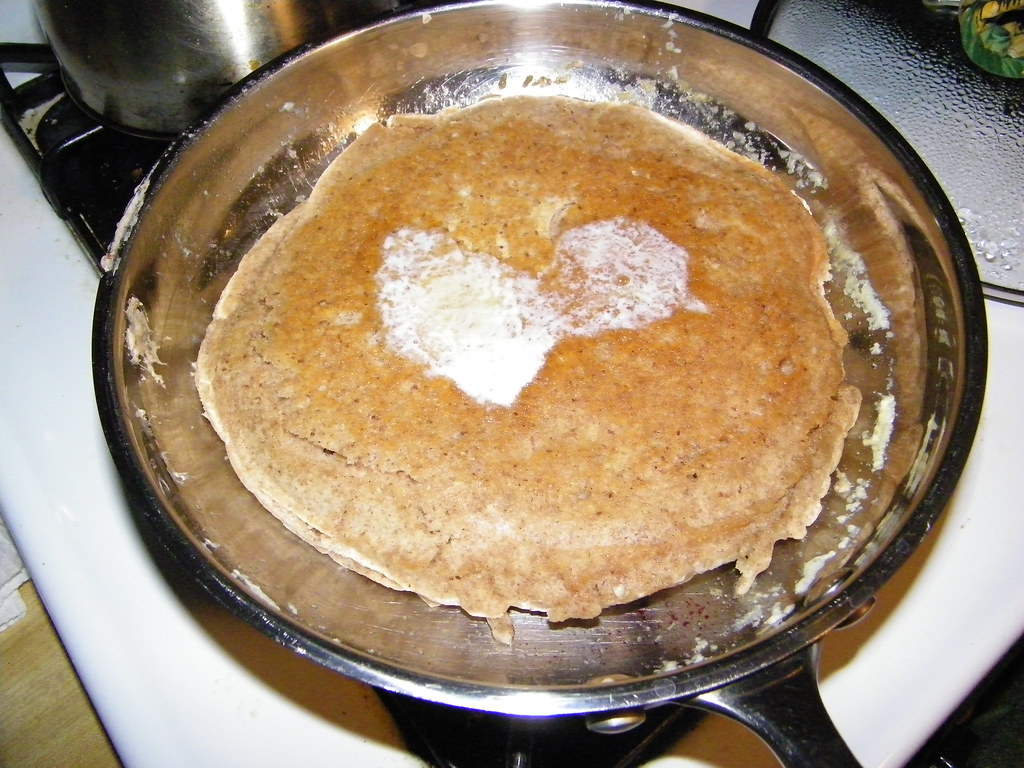
Pancake Cooking Consistency
Achieving consistent cooking results is essential for delicious pancakes every time. To ensure this, you need to focus on two key factors: heat control and batter consistency. Controlling the heat on your griddle or pan is crucial for even cooking and preventing burnt or undercooked pancakes. Make sure to preheat your cooking surface to the right temperature and adjust it as needed throughout the cooking process. Additionally, maintaining a consistent batter consistency is important for uniform pancake texture and cooking time. Use a measuring cup or scale to accurately measure your ingredients and mix them until just combined. Here’s a helpful table to summarize the importance of heat control and batter consistency:
| Heat Control | Batter Consistency |
|---|---|
| Prevents burning or undercooking | Ensures uniform texture and cooking time |
| Adjust temperature as needed | Measure ingredients accurately |
| Even cooking results | Mix until just combined |
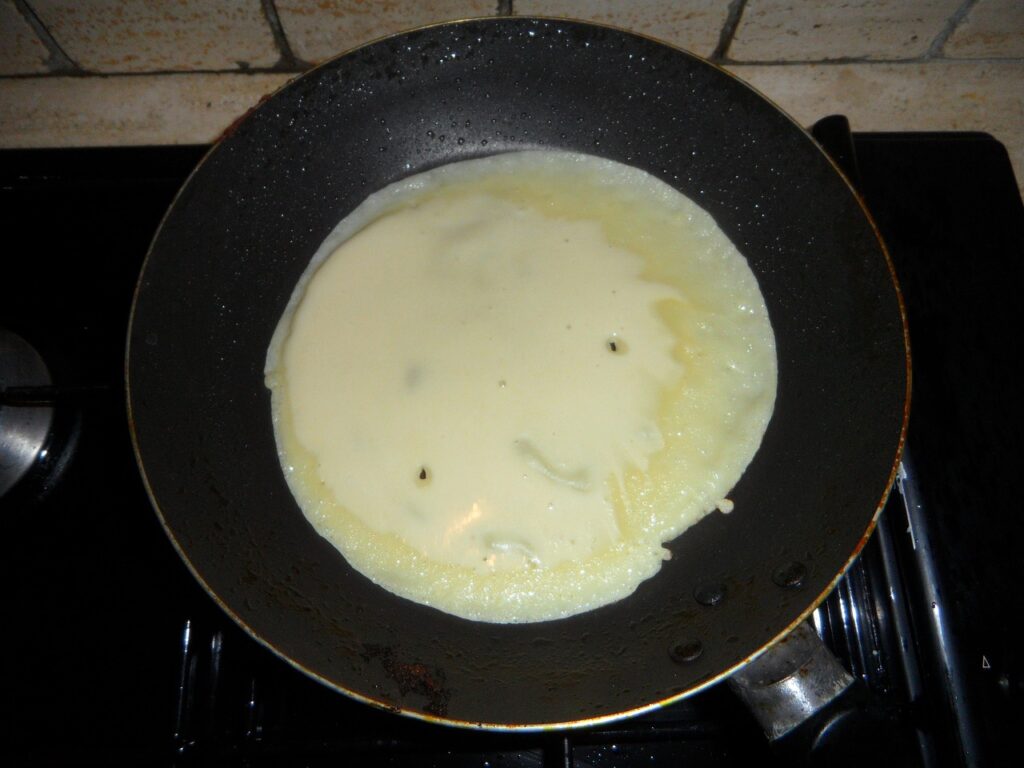
Flipping Techniques: Mastering Pancake Flips on Griddles and Pans
You can achieve perfect pancake flips by using the right technique on a griddle or pan. Flipping pancakes may seem daunting at first, but with practice and the right approach, you’ll be flipping pancakes like a pro in no time.
Here are some pancake flipping techniques to help you achieve those perfect flips:
- Mastering the wrist flick: Use your wrist to quickly and confidently flip the pancake. The key is to apply a swift and controlled motion to ensure the pancake lands back in the pan without breaking.
- Timing is everything: Wait until the edges of the pancake start to look set and bubbles form on the surface. This indicates that it’s time to flip. Don’t rush the flip; patience is crucial for achieving that golden-brown perfection.
- Use the right tools: Invest in a good quality spatula with a thin edge to easily slide under the pancake. This will make the flipping process smoother and help prevent any mishaps.
Versatility: Exploring the Different Pancake Possibilities
When it comes to pancakes, you have endless possibilities to explore. Whether you prefer cooking them on a griddle or a pan, both offer unique advantages.
Plus, with a variety of toppings and the ability to shape and size your pancakes to your liking, you can truly make them your own.
Griddle Vs. Pan
If you want pancakes with a more even and consistent cooking surface, a griddle is the better option compared to a pan. The griddle’s large, flat surface allows for better heat control, ensuring that your pancakes cook evenly from edge to edge. Additionally, the griddle’s consistent temperature distribution prevents any hotspots that could result in unevenly cooked pancakes.
Here are three reasons why using a griddle for pancakes is a great choice:
- Heat Control: The griddle’s larger size allows for better heat distribution, resulting in more consistent cooking and preventing any burnt or undercooked spots on your pancakes.
- Batter Consistency: The flat surface of the griddle ensures that your pancake batter spreads evenly, creating perfectly round and uniform pancakes.
- Efficiency: With a griddle, you can cook multiple pancakes at once, saving you time and allowing everyone to enjoy their pancakes at the same time.
Pancake Topping Ideas
For a delicious twist, try topping your stack of fluffy breakfast favorites with fresh berries and a dollop of whipped cream. This combination of sweet and tangy flavors will take your pancakes to the next level. But why stop there? There are countless pancake topping combinations and creative presentation ideas to explore. Here’s a table to inspire your culinary creativity:
| Topping | Presentation Idea |
|---|---|
| Maple syrup | Drizzle in a zigzag pattern |
| Nutella | Spread evenly and swirl |
| Sliced bananas | Arrange in a circular pattern |
| Chocolate chips | Sprinkle generously |
| Caramel sauce | Drizzle in a crisscross pattern |
| Chopped nuts | Sprinkle on top |
Don’t be afraid to mix and match toppings to create your own unique pancake masterpiece. Get creative and have fun with your breakfast!
Pancake Shapes and Sizes
To create fun and unique shapes and sizes, try using cookie cutters or molds in your pancake batter. This simple technique can transform your ordinary pancakes into delightful creations that are sure to impress.
Here are some tips to help you enjoy the process and make the most of your pancake shapes and sizes:
- Start with a well-greased griddle or pan to ensure your pancakes don’t stick.
- Place the cookie cutter or mold directly onto the griddle or pan and pour the batter inside.
- Carefully remove the cookie cutter or mold once the pancake begins to set.
- Flip the pancake using your preferred pancake flipping technique to cook the other side.
- Experiment with different shapes and sizes to keep things interesting.
- Add a variety of pancake toppings ideas like fresh fruits, whipped cream, chocolate chips, or maple syrup to enhance the flavors and presentation.
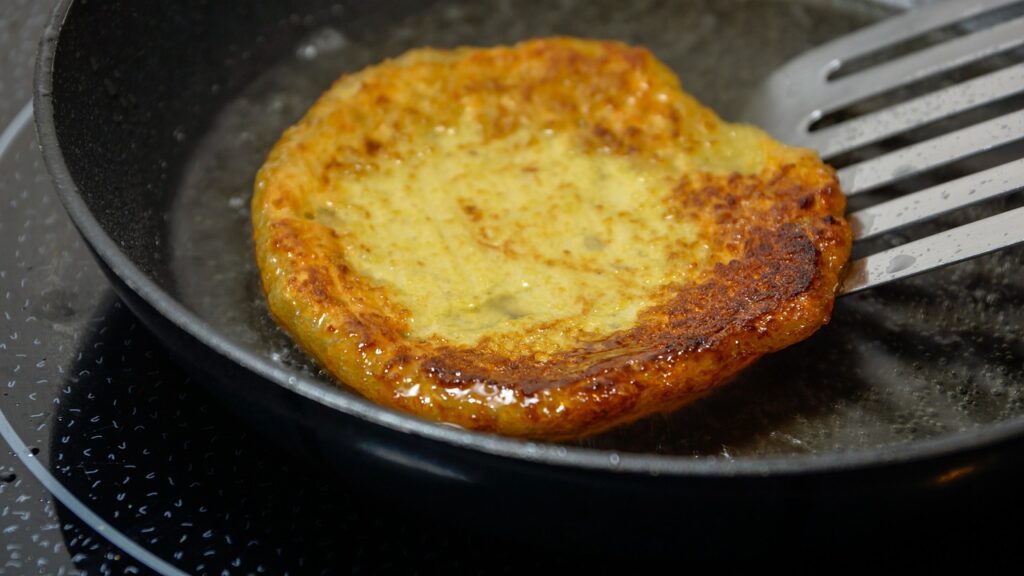
Size Matters: Choosing the Right Griddle or Pan for Your Pancake Needs
When it comes to making pancakes, you’ll want to consider the size of your griddle or pan. The size of your cooking surface can greatly affect the outcome of your pancakes. If you’ve a small pan, you may have to make smaller pancakes or cook them in batches. A larger griddle or pan allows you to make bigger pancakes or cook multiple pancakes at once.
As for flipping techniques, it’s important to use a spatula that fits the size of your pancakes. A smaller spatula mightn’t be able to support a larger pancake, leading to messy flips.
Cleaning and Maintenance: Griddles Vs. Pans
When it comes to cleaning and maintenance, griddles and pans have their differences.
Griddles offer convenience with their flat, smooth surface, making it easier to wipe off excess grease and food residue.
Pans, on the other hand, may require more scrubbing due to their curved edges and corners.
Cleaning Convenience: Griddles Vs. Pans
If you want easier cleaning, griddles are more convenient than pans for making pancakes. With a griddle, you can control the heat more precisely, ensuring that your pancakes are cooked evenly. Cleaning a griddle is also easier compared to cleaning a pan.
Here are some reasons why griddles are more convenient for cleaning:
- Nonstick Surface: Griddles often have a nonstick coating, making it easier to remove any leftover batter or residue.
- Dishwasher Safe: Many griddles are dishwasher safe, allowing you to simply place them in the dishwasher for a hassle-free cleanup.
- Removable Drip Tray: Some griddles come with a removable drip tray, which collects any excess grease or oil, making it easier to dispose of and clean.
Durability Comparison: Griddles Vs. Pans
To ensure durability, you’ll want to consider the construction and materials used in both options.
When comparing the durability of griddles and pans, it’s important to look at how well they distribute heat. Griddles are known for their ability to evenly distribute heat across the surface, thanks to their large cooking area and thick construction. This allows for consistent cooking results and prevents hot spots.
On the other hand, pans may have more variation in heat distribution due to their smaller size and thinner construction. While they can still provide satisfactory results, they may require more attention and frequent stirring to prevent burning.
Ultimately, if durability and consistent heat distribution are your priorities, a griddle would be the better option for you.
Maintenance Tips: Griddles Vs. Pans
For easy maintenance, remember to clean your cooking utensil after each use, wiping away any excess grease or food particles. This simple step will help prolong the lifespan of your griddle or pan and ensure optimal performance.
Here are some tips to make maintenance a breeze:
Heat Control:
- Avoid High Heat:
- Use moderate heat levels to prevent damage to the non-stick coating over extended periods.
- Preheat on Medium:
- Preheat your griddle or pan on medium heat before introducing ingredients to prevent sticking.
Cleaning Methods:
- Non-Stick Surfaces:
- For non-stick surfaces, employ a soft sponge or cloth with mild dish soap for gentle removal of any residue.
- Stainless Steel or Cast Iron:
- Use a slightly more abrasive scrubber or brush for stainless steel or cast iron, especially for stubborn stains.
- Caution:
- Refrain from using harsh chemicals or metal utensils that may scratch or damage the surface of your cookware.
.
Temperature Control: Finding the Perfect Heat for Pancake Perfection
You’ll want to aim for a medium heat setting on your griddle or pan for perfectly cooked pancakes. Flame control is key to achieving the right temperature for your pancakes. Too high of a flame can result in burnt pancakes, while too low of a flame can result in undercooked pancakes. It’s important to find the balance.
Additionally, the cooking surface of your griddle or pan plays a role in pancake perfection. Non-stick surfaces are ideal for pancakes as they prevent sticking and ensure an even cooking process. If your griddle or pan isn’t non-stick, make sure to use a small amount of oil or cooking spray to prevent sticking.
Cooking Time: Does a Griddle or Pan Cook Pancakes Faster
When using a non-stick surface, cooking times may be faster than when using a surface that isn’t non-stick. This is because the non-stick surface allows for easy flipping and prevents the pancakes from sticking, resulting in a quicker cooking process.
Here are some tips to help you enjoy your pancakes even more:
- Use a non-stick griddle or pan for faster cooking times.
- Control the heat: Adjust the temperature to ensure even cooking and to prevent burning.
- Optimize batter spreadability: A non-stick surface allows the batter to spread evenly, resulting in perfectly round and fluffy pancakes.
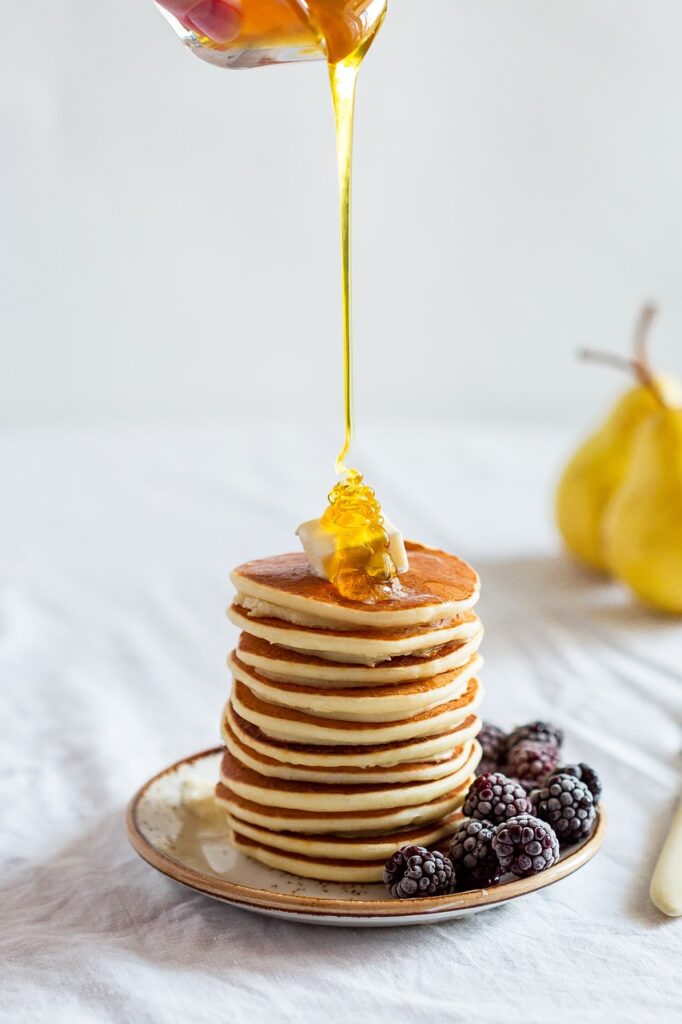
Fluffy Factor: Achieving Light and Fluffy Pancakes on Griddles and Pans
To achieve light and fluffy pancakes, make sure the batter is well-mixed and free of lumps before cooking. This is crucial for creating that perfect, fluffy texture that everyone loves.
When using a griddle or pan, it’s important to keep an eye on the pancake browning. You want them to be golden brown, but not too dark. Adjust the heat accordingly to achieve the desired color.
Flip the pancakes when you see bubbles forming on the surface, as this indicates that the batter is cooking evenly.
Remember to not overcrowd the griddle or pan, as this can result in uneven cooking and potentially soggy pancakes.
Spreading Batter: Which Surface Makes It Easier
When it comes to spreading pancake batter, the surface you choose can make all the difference. Let’s explore which surface makes it easier for you.
On a Non-Stick Griddle:
- The batter spreads smoothly and evenly, thanks to the griddle’s non-stick surface.
- Flipping techniques are a breeze, as the pancakes effortlessly slide off the griddle.
- You can experiment with different pancake topping ideas, like fresh berries or a dollop of whipped cream.
On a Traditional Pan:
- The batter may stick to the pan if it’s not properly greased, making spreading a bit more challenging.
- Flipping techniques require a gentle touch to avoid breaking the pancakes.
- You can get creative with pancake topping ideas, such as creamy Nutella or a drizzle of maple syrup.
So, whether you choose a griddle or a pan, each surface has its own advantages.
Now, get ready to enjoy some delicious pancakes!
Cost and Space: Considering Budget and Kitchen Size for Your Pancake Cookware
Consider your budget and kitchen size when choosing the cookware for making delicious pancakes.
Pancake cookware comes in various types and price ranges, so it’s essential to find one that fits your budget. If you’ve a limited budget, a non-stick frying pan or griddle may be the best option. These are affordable and versatile, allowing you to make pancakes and other dishes.
Additionally, consider your kitchen space requirements. If you’ve a small kitchen with limited storage space, opting for a compact griddle or pan is a wise choice. Look for cookware that’s both functional and space-saving, ensuring that it can be easily stored when not in use.
Conclusion
In conclusion, whether you choose a griddle or a pan for making pancakes, both options have their own advantages.
Griddles provide even heat distribution and larger cooking surfaces, while pans offer versatility and are more suitable for smaller kitchens.
Ultimately, the choice depends on your personal preferences and needs.
Whichever you choose, with the right techniques and practice, you can achieve light and fluffy pancakes that will delight your taste buds.

